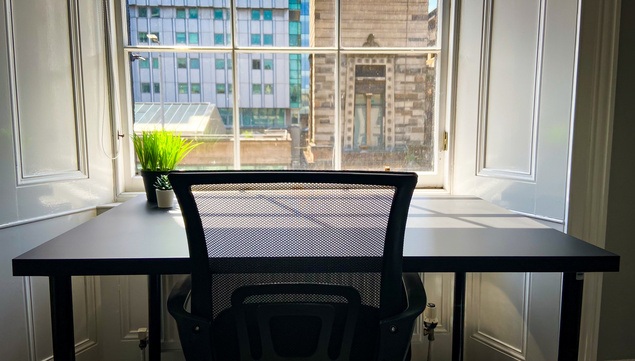When it comes to planning your business expenses, few costs feel as significant as office rent. It’s not just a line on the balance sheet—it can influence where you base your team, how you budget for growth, and even the type of clients you attract.
So, the question on many people’s minds right now is simple: are office rents expected to rise, or could we see them fall in the coming years? The answer isn’t straightforward, but by looking at current market conditions, regional trends, and workplace shifts, we can get a clearer picture of what lies ahead.
The State of the Market Today

Across the UK, office rents are shaped by a mixture of demand, supply, and regional trends. In major cities like London, Edinburgh, and Manchester, premium office space remains in high demand, often pushing prices higher. At the same time, secondary locations may offer more competitive rates, giving businesses options depending on their priorities.
The pandemic caused a major shift, with hybrid working reducing overall demand for office space in some areas. Many landlords responded with flexible lease terms or incentives to keep occupancy rates steady. While some city centres bounced back quickly, others are still adjusting to the new normal of how people work.
Right now, the market feels balanced between landlords seeking returns and tenants looking for value. That balance, however, is fragile—changes in the economy or work culture could tip it either way. For businesses, keeping an eye on these signals is essential to making the right property decisions.
Factors Driving Office Rents
Office rents rarely move in isolation; they respond to broader economic and cultural forces. To understand where prices might head, it helps to look at the main factors shaping demand and supply. These elements give businesses a clearer picture of why rents rise or fall.
1) Interest Rates and Finance
Rising interest rates make borrowing more expensive for developers and landlords. Those higher costs often filter through into rents, as owners look to maintain returns. When rates are lower, that financial strain eases, and tenants often find themselves with more negotiating power.
This link between finance and rental pricing is especially relevant in volatile economic periods. Businesses planning for the long term should keep an eye on central bank policy, as it can quickly affect both lease costs and the availability of new developments.
2) Vacancy Levels
Vacancy levels act as a pressure valve for the market. When large amounts of office space are sitting empty, landlords are usually more open to incentives, discounts, or flexible lease terms. That makes it easier for tenants to secure favourable deals.
By contrast, when vacancy rates are low, landlords can hold firm and even push rents higher. For businesses considering relocation or expansion, monitoring vacancy data in specific regions can provide valuable timing advantages.
3) Employee Expectations
The modern workforce has very different expectations compared to even a decade ago. Many companies are redesigning their workspace strategies, balancing the need for cost savings with the appeal of attractive, well-equipped offices. These decisions feed directly into demand patterns.
If employees expect collaborative spaces, breakout areas, and better amenities, businesses may pay more to secure premium offices. In turn, that willingness to invest in quality can push rents up, especially in competitive urban markets.
4) Government Policies
Regulations and policies also shape rental dynamics in ways that businesses cannot ignore. Business rates, tax reliefs, and sustainability requirements all affect how attractive certain properties are to tenants. Landlords that meet new standards often command higher rental values.
On the other hand, buildings that fail to keep up with environmental or accessibility targets risk losing relevance. This can lead to reduced demand and falling rents for outdated stock, even in strong locations.
Regional Differences Across the UK

Office rents don’t follow a single national trend. London’s financial districts often command premium rates that far exceed those in regional hubs. Meanwhile, cities such as Birmingham, Glasgow, and Leeds are becoming more attractive as businesses seek cost-effective yet well-connected locations.
Smaller towns and suburban business parks have also seen a rise in demand. Companies that embrace hybrid working often find these areas offer the right balance between accessibility and affordability. This shift has created pockets of rising rents outside traditional city centres.
For decision-makers, the lesson is clear: don’t assume the national headlines apply to your local market. A rent rise in London doesn’t necessarily mean the same for Edinburgh or Bristol. Understanding your region is the key to spotting opportunities and avoiding surprises.
The Role of Hybrid and Remote Work
One of the biggest questions for landlords is how hybrid working will shape long-term demand. With many employees working part of the week from home, some companies are downsizing their space. That naturally puts downward pressure on rents, especially for older, less flexible buildings.
At the same time, businesses still value the office as a place for collaboration, culture, and client meetings. Instead of cutting space entirely, many are reconfiguring it, opting for smaller but higher-quality premises. This has created a “flight to quality” where the best buildings hold their value or even rise in price.
The overall result is a split market: prime spaces remain competitive, while secondary stock may struggle. For tenants, this presents an opportunity to negotiate better terms depending on their flexibility. It’s a renter’s market in some places, but a landlord’s market in others.
Predictions: Rising or Falling?
Looking ahead, experts predict a mixed picture for office rents. Premium city-centre spaces are likely to see modest increases, fuelled by limited supply and high demand for quality. However, secondary locations may face flat or even falling rents as landlords work to attract tenants.
Economic conditions will heavily influence the direction. A slowdown could reduce demand, prompting landlords to offer discounts, while strong growth could push prices higher. Inflation and interest rates will also play a role in shaping affordability for both landlords and tenants.
The most likely outcome is a two-speed market. Businesses that want prestige and top-tier amenities will continue to pay more, while those seeking flexibility and value will find favourable options elsewhere. The choice will depend on your priorities and stage of growth.
Elements Shaping Your Rental Outlook
To make sense of whether rents will rise or fall, it helps to focus on a few core elements. These shape the market more directly than daily headlines and give businesses a framework for decision-making.
1) Supply and Demand
When supply outpaces demand, rents naturally soften as landlords compete for tenants. Conversely, limited availability tends to push rents upward, particularly in central business districts where businesses value proximity and prestige. This ebb and flow forms the foundation of any rental market.
The dynamic also varies by region, meaning there’s no single national trend. A city experiencing rapid business growth may see sharp rent increases, while another with surplus space might struggle to keep rents steady. For decision-makers, keeping a close eye on local conditions often proves more useful than broad market averages.
2) Economic Growth
A strong economy usually supports higher rents, as expanding companies require more space and competition intensifies. Recessions or slower growth periods, by contrast, cool demand and often present opportunities for tenants to secure better deals. Economic confidence has a direct influence on landlords’ ability to raise prices.
In times of uncertainty, many landlords adopt a more flexible stance. Shorter agreements, rent-free periods, or added incentives become more common as owners seek to minimise vacancies. For tenants willing to negotiate, this can open doors to more favourable terms than in boom years.
3) Workplace Trends
Hybrid and remote working models have permanently shifted how businesses view office space. Many firms now need less square footage, but they still want high-quality environments that support collaboration, team culture, and client-facing interactions. This selective demand creates winners and losers in the market.
Flexible, serviced, and shared offices are becoming increasingly popular, offering agility for companies that don’t want long-term commitments. At the same time, organisations prioritising stability continue to choose traditional leases. Each approach influences not only rental levels but also the kinds of spaces being developed and renovated.
4) Location and Connectivity
Offices located near transport hubs or in well-connected districts tend to command premium rents. Easy access for staff and clients adds value that businesses are often willing to pay for. Out-of-town locations may offer lower costs, but they can rise in appeal as commuting patterns evolve.
Recent shifts in travel behaviour—such as fewer people commuting five days a week—are changing demand. Some suburban hubs and regional towns are seeing renewed interest as companies adapt to hybrid models. Over time, this could rebalance rental values away from traditional city centres.
5) Building Quality and Sustainability
Modern, energy-efficient buildings generally command higher rents, as they help businesses meet both operational and sustainability goals. Tenants often see the added expense as worthwhile when weighed against lower running costs, reduced emissions, and the positive image greener offices project.
Older, less efficient buildings face a different reality. As sustainability becomes a growing priority for regulators and employees alike, landlords of outdated stock may need to discount rents or invest heavily in upgrades. The divide between high-performing and underperforming buildings is becoming more pronounced year by year.
What This Means for Your Business

So, what should you take away from all this? The short answer is that office rents are unlikely to move in just one direction across the board. Instead, they’ll vary based on region, building type, and the balance between flexibility and permanence.
For established firms, paying more for a long-term lease in a prime location might make strategic sense. For startups and project-based teams, securing flexible space on a licence could keep costs manageable and options open. The right approach depends on your priorities, risk tolerance, and growth plans.
The good news is that the market now offers more choice than ever before. From premium headquarters to agile coworking hubs, businesses can find a workspace that matches their needs without locking themselves into an unsuitable arrangement. The key is to weigh both today’s conditions and tomorrow’s possibilities.
Summary
Office rents in the UK are being shaped by a blend of economic forces, workplace trends, and regional differences. Prime city-centre offices may see rents rise, while secondary or less flexible spaces could face downward pressure. For tenants, that means opportunity—if you know where to look and how to align your needs with the market.
Quintessential Offices makes it simple to match your business with the workspace it needs, from long-term leases to flexible short-term licences. Our portfolio spans prestigious city addresses and adaptable serviced offices built for growth. Get in touch today to find a space that offers both confidence and flexibility for your future.






